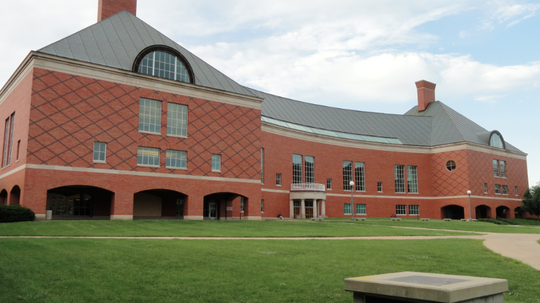

Imagine a senior citizen who needs medication, but is anxious about navigating their home. Instead of getting out of their chair and risking a fall, this senior citizen simply picks up a smart phone, taps a button, and a miniature drone whizzes into the room to drop the pills into their hand.
Grandma's house, 2.0.
University of Illinois Urbana-Champaign researcher Naira Hovakimyan was just awarded a $1.5 million grant from the National Science
Foundation to fund the development of robots that can assist the elderly with daily tasks. The hope is that by 2030, when the number of people over age 65 will reach 71 million, robot drones could help fill the dearth of caretakers, as well as alleviate the strain on limited space in nursing homes and assisted care facilities. In the process, Hovakimyan hopes to improve interactions between drones and humans as we head into a future where we're likely to interact with robots on a daily basis.
The project Hovakimyan will be leading is called Automation Supporting Prolonged Independent Residence for the Elderly, or ASPIRE. Along with a team of engineering, computer science, and psychology researchers, she will be developing co-robots, which include drones and ground robots that can be used to assist in small tasks. In the future, these bots could help with cleaning or fetching medication, as well as perform more extensive tasks, like delivery. These robotic helpers could be key to the elderly maintaining autonomy, which could prevent a resource crunch.
“The idea is that if we get technologically equipped houses, people will most likely enjoy their independent life in their home as opposed to going to a nursing home, where things will be overstuffed and understaffed,” said Hovakimyan to Engineering at Illinois.
The idea for the tech actually came from Hovakimyan's passion for helping people and robots co-exist. In 2012, as part of a UIUC collaboration between the dance and robotics department, Hovakimyan and PhD student Venanzio Cichella programmed two quadrotors that could "dance the tango," or coordinate movement based on obstacles and sound. This indicated the drones are capable of avoiding collisions and navigate a dynamic environment, "highlighting how cooperative drones could be," she told Chicago Inno.
However, when she searched for research about how people and robots interact, she could only find studies that looked at humanoid robots, which are much more costly and extensive to develop.
"What we are talking about particularly are miniaturized drones," she said. "It seems there is no research around their social etiquette."
Making drones unobtrusive in daily life will be key to helping senior citizens who grew up in a pre-digital era adjust to the new technology.
So how do you make a drone…polite? Ensure it is quiet, made of soft materials, travels at a comfortable speed, and can avoid collisions, according to Hovakimyan. "If there is a drone flying next to you, you may be scared, but you are safe," she said.
Hovakimyan and her team received an additional $300,000 grant from the NSF to especially address this concern. Over the next two years, her team will lay the groundwork for Non-Intrusive, Collaborative, Empathetic, Robust (NICER) robots. The aim is to study peoples' perception of robots based on behavior and appearance, and understand how to design robots that people feel comfortable and safe around.
Though there is a lot of drone stigma right now, in the future she sees the home with a variety of robots for different tasks. Small, wearable drones might fly off your wrist to shut off a light, while another drone could hover above you, cleaning the ceiling. A larger, stronger drone could be waiting at the door, ready to deliver a package.
"Within the next twenty years we will see the explosion of drones. We will see them everywhere," Hovakimyan predicts. "The UAVs will be the next cell phone technology."
Now her goal is to ensure that current populations who could be aided by drones in the future (herself included), will see robots as friends.
"Today grandmothers are afraid of the drones," she said. "I won't be scared of those in 2030."
Image credit: Wikimedia








